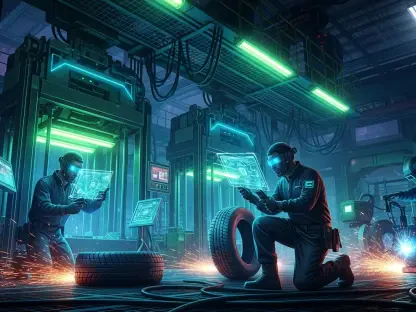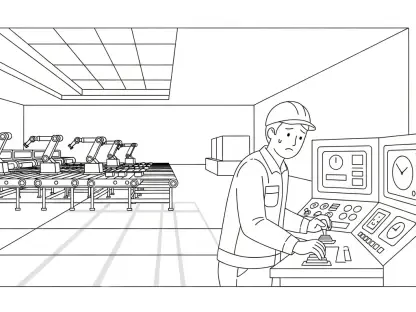As we dive into the world of procurement technology and digital transformation, I’m thrilled to sit down with Kwame Zaire, a seasoned expert in manufacturing with a deep focus on electronics, equipment, and production management. Kwame is widely recognized as a thought leader in predictive maintenance, quality, and safety, and today, we’ll explore how a global manufacturer modernized its indirect procurement processes through innovative technology. Our conversation will touch on the motivations behind embracing digital solutions, the challenges of implementation, the power of strategic partnerships, and the tangible benefits of streamlining operations in a competitive landscape.
How did you first recognize the need to modernize indirect procurement processes in a manufacturing setting?
In manufacturing, indirect procurement—things like office supplies, IT equipment, and maintenance services—often gets overlooked compared to direct materials. But as complexity in the global market grew, it became clear that outdated, manual processes were dragging us down. We saw inefficiencies in how we sourced and managed these goods and services, leading to higher costs and missed opportunities. Plus, with increasing demands for transparency and sustainability, we needed a system that could keep up with modern expectations while maintaining agility.
What were some of the biggest hurdles you faced in procurement before adopting a digital solution?
One major issue was the lack of visibility. We struggled to track spending and supplier performance across different departments, which made it hard to control costs or mitigate risks. There was also a lot of manual work—think endless paperwork and approvals—that slowed everything down. On top of that, ensuring compliance with sustainability goals was a challenge without a centralized way to monitor supplier practices. These pain points made it obvious that continuing with the status quo wasn’t sustainable.
What inspired the shift toward a full digital transformation for procurement operations?
It really came down to staying competitive. In today’s volatile market, you can’t afford to be bogged down by inefficient processes. We saw digital transformation as a way to streamline operations, automate repetitive tasks, and gain real-time insights into our spending and supplier relationships. It wasn’t just about cutting costs—it was about building a resilient supply chain that could adapt to economic or geopolitical disruptions. The vision was to create a system that empowered our team to focus on strategy rather than paperwork.
What key outcomes were you hoping to achieve by implementing a new eProcurement platform?
Our primary goal was efficiency. We wanted to automate manual tasks like order approvals and supplier vetting to free up time for strategic work. Beyond that, we aimed to improve visibility into our spend and supplier practices to reduce risks and align with sustainability objectives. Another big focus was enhancing the user experience for our team—making it easier to find and order approved items through intuitive tools. Ultimately, we wanted a system that supported long-term business agility.
How did you approach selecting the right technology for this transformation?
We looked for a platform that could integrate seamlessly with our existing systems, like our ERP, to avoid major disruptions. It was also critical to find a solution that offered a unified view of procurement—from sourcing to payment—so we could manage everything centrally. We prioritized user-friendliness because adoption by our team was key to success. After evaluating several options, we chose a platform that checked all these boxes and had a proven track record in manufacturing.
Can you share some insights into the implementation process and how you managed the transition?
The implementation was surprisingly fast, taking just a few months, which was critical for minimizing downtime. We worked closely with a consulting partner to ensure smooth integration with our ERP and supplier databases, which helped avoid supply chain hiccups. There were challenges, like training staff on the new system, but we tackled them with hands-on workshops and clear communication. The goal was to keep business running as usual while rolling out the new tools, and meticulous planning made that possible.
How did partnerships play a role in the success of this project?
Collaboration was everything. We worked with a technology provider and an implementation partner who brought deep expertise to the table. Their guidance helped us navigate technical complexities and stick to an aggressive timeline. There were moments when challenges popped up—like aligning data across systems—and the teamwork between all parties was crucial in finding quick solutions. Regular check-ins and open communication ensured everyone stayed on the same page.
What were some of the most noticeable improvements after rolling out the new system?
Right away, we saw a boost in efficiency. Tasks that used to take hours, like processing purchase orders, were automated, saving significant time. Employee productivity improved because the system was intuitive—catalog management, for instance, became a breeze. We also gained better control over supplier relationships, with clearer insights into performance and risk. On the sustainability front, having visibility into supplier practices helped us align with our environmental goals more effectively.
How has this transformation impacted your team’s day-to-day work in procurement?
It’s been a game-changer. The automation of routine tasks means our team isn’t bogged down by manual data entry or chasing approvals. They can now focus on higher-value activities, like negotiating better supplier terms or analyzing spend trends. The user-friendly interface also reduced the learning curve, so adoption was quick. Overall, it’s made procurement less of a grind and more of a strategic function within the organization.
What is your forecast for the future of digital procurement in manufacturing?
I see digital procurement becoming even more integral to manufacturing success. As technologies like AI and machine learning advance, we’ll likely see platforms that can predict supply chain disruptions or optimize spending in real time. The focus on sustainability will also grow, with digital tools providing deeper insights into supplier ESG performance. For manufacturers, staying ahead will mean embracing these innovations to build resilient, transparent, and efficient procurement systems that can weather any storm.









